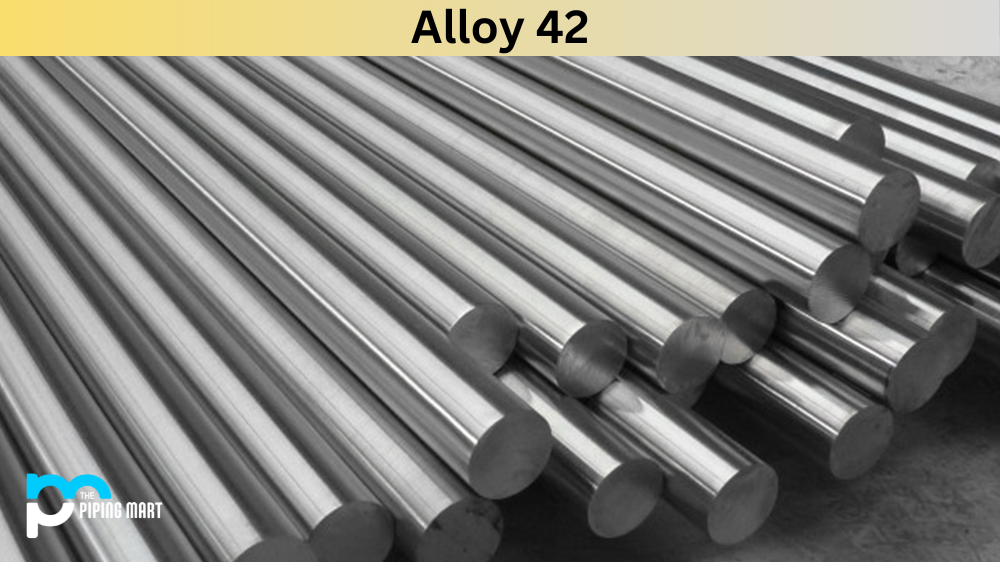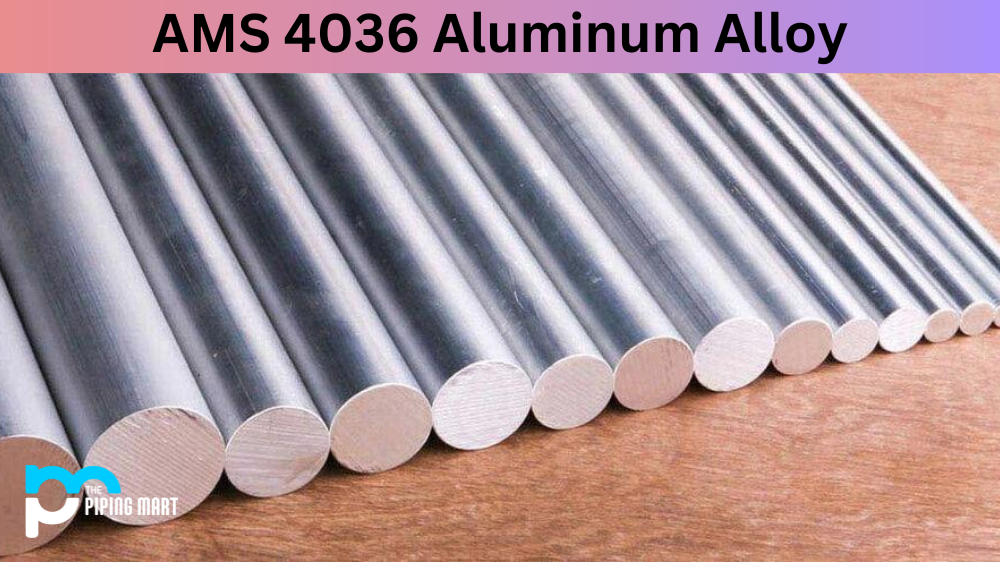In this blog post, we will cover the basics of Alloy 42, including its composition, mechanical and physical properties, uses, corrosion resistance, heat treatment, and welding information.
What is Alloy 42?
Alloy 42 is a unique material frequently used in the aerospace and telecommunications industries. It has various beneficial properties, making it an ideal choice for many applications.
Alloy 42 Composition
Alloy 42 is a nickel-iron alloy with low thermal expansion properties. It usually contains 41% nickel and 5% silicon, but the composition can vary depending on the specific application. The addition of silicon helps to reduce the coefficient of thermal expansion, making it an excellent choice for applications that require precise tolerances.
Alloy 42 Chemistry |
|
|---|---|
| Nickel, nominal | 41.00 |
| Manganese, max. | 0.80 |
| Silicon, max. | 0.30 |
| Carbon, max. | 0.05 |
| Chromium, max. | 0.25 |
| Phosphorus, max. | 0.025 |
| Sulfur, max. | 0.025 |
| Cobalt, max. | * |
| Aluminum, max. | 0.10 |
| Iron | Remainder |
Alloy 42 Mechanical Properties
Alloy 42 has a high strength-to-weight ratio, allowing for a strong and lightweight material. It also has excellent machinability, making it easy to work with during production. It has a low tensile strength and a low modulus of elasticity, making it less rigid than some other metals.
Alloy 42 Typical Mechanical Properties |
||
|---|---|---|
| Tensile Strength | ksi | 75 |
| MPa | 517 | |
| Yield Strength | ksi | 40 |
| MPa | 276 | |
| Elongation | % in 2 in. | 30 |
| Hardness Ann. | Rockwell B | 76 |
| Modulus of Elasticity | ksi | 21.5 x 103 |
Alloy 42 Physical Properties
Alloy 42 has a low thermal expansion coefficient, making it an excellent choice for applications requiring stable dimensions over various temperatures. It also has a high resistivity, low thermal conductivity, and low magnetic permeability, making it an ideal material for electromagnetic shielding.
Alloy 42 Typical Physical Properties |
||
|---|---|---|
| Density | lb/cu in | 0.293 |
| Specific Gravity | 8.12 | |
| Curie Temp | °F | 716 |
| °C | 380 | |
| Melting Point | °F | 2600 |
| °C | 1425 | |
| Electrical Resistivity | ohm-cir mil/ft | 430 |
| Microhms-cm | 71 | |
| Thermal Conductivity | BTU-in/sq. ft-hr-°F | 74.5 |
| W/cm °C | 0.11 | |
| Specific Heat | BTU/lb °F | 0.12 |
Alloy 42 Specifications
Alloy 42 Specifications |
|||
|---|---|---|---|
| ASTM F30 | MIL-I-23011 CL 5 | AMS 1-23011 CL 5 | UNS K94100 |
Alloy 42 Uses
Alloy 42 has a wide range of uses. It is often used in the aerospace industry for structural components due to its strength and low thermal expansion properties. It is also a popular material in telecommunications because of its good electrical conductivity and electromagnetic shielding capabilities. It is also used in precision measurement devices, cooling systems, and medical equipment.
Alloy 42 Corrosion Resistance
Alloy 42 has excellent corrosion resistance, making it ideal for applications in harsh environments. It is resistant to most acids, alkalis, and atmospheric corrosion. Its resistance to corrosion makes it a popular material in chemical processing equipment, as well as in marine applications.
Alloy 42 Heat Treatment
Alloy 42 can be heat treated to improve its mechanical properties. It can be annealed, which involves heating the alloy to a high temperature and cooling it slowly. This process can improve its ductility, making it easier to work with. It can also be aged by heating it at a lower temperature for a specific period of time, which can improve its strength.
Alloy 42 Machining
Alloy 42 has excellent machinability, making creating complex shapes and features easy. It can be machined using conventional turning, milling, and drilling methods. Adding silicon to the alloy can make it more abrasive, increasing tool wear during machining.
Alloy 42 Welding
Alloy 42 can be welded using various techniques, including gas tungsten arc welding (GTAW) and gas metal arc welding (GMAW). It is essential to ensure that the welding process does not produce high heat, which can cause the material to warp or crack.
Conclusion
Alloy 42 is a versatile material that has a variety of beneficial properties. Its low thermal expansion coefficient and excellent machinability make it an ideal choice for applications that require precise tolerances. Its corrosion resistance and high strength-to-weight ratio make it a perfect choice for harsh environments. It is a popular material in the aerospace, telecommunications, and medical industries. With its many benefits, Alloy 42 is a material that will continue to find new applications.

Meet Bhavesh, a seasoned blogger with a wealth of knowledge and experience. From metal products manufacturing to retail, Bhavesh has a diverse background in various industries and is dedicated to sharing his insights and expertise with readers.




